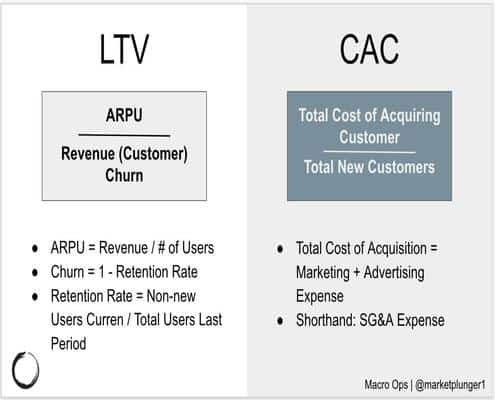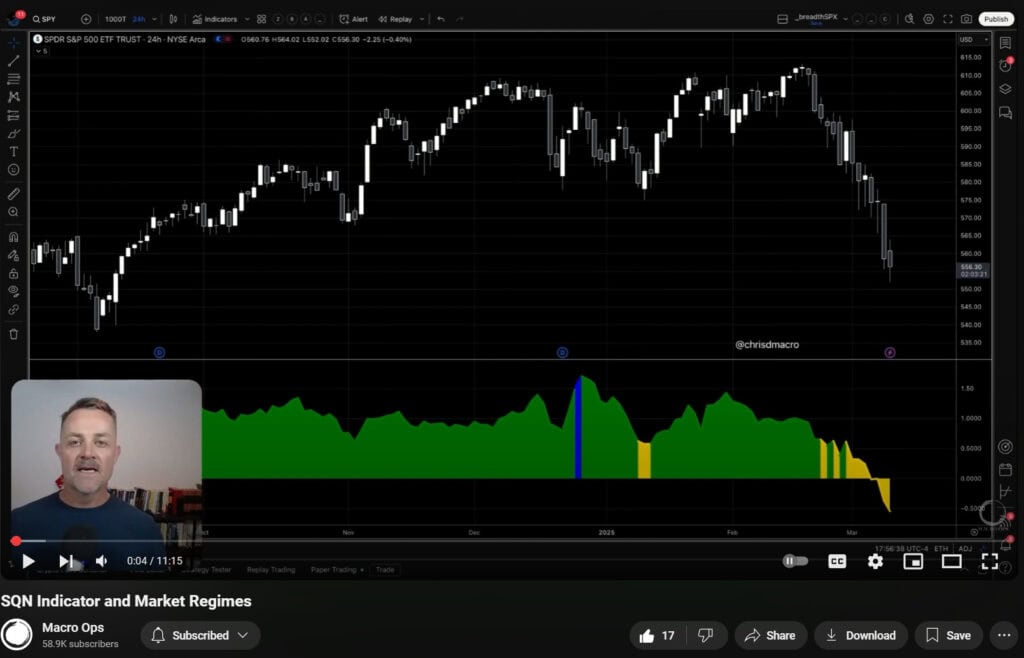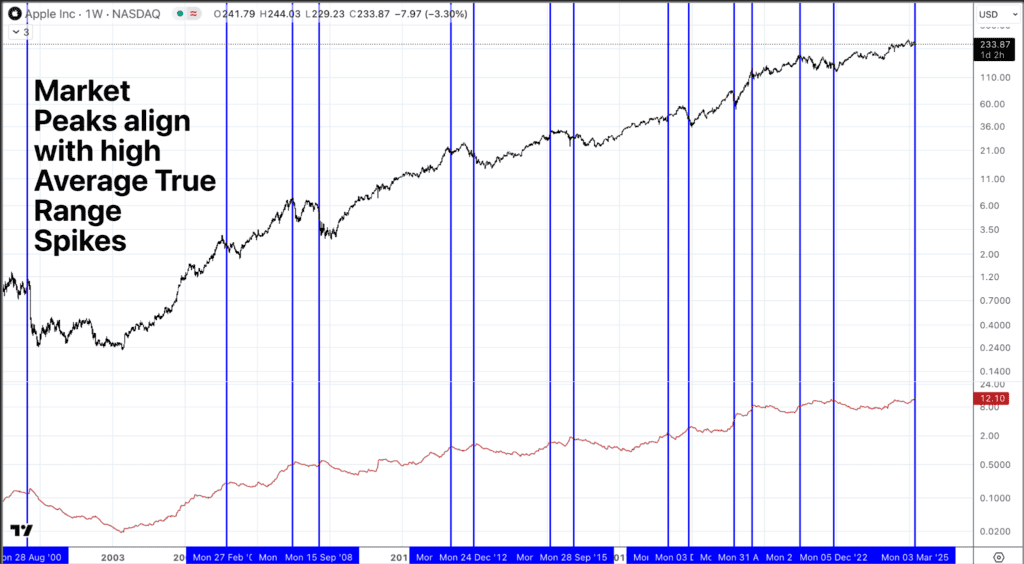Last Wednesday we dove deep into unit economic analysis. We discussed what it is, why it’s important and how to use it in investment analysis.
Alta Fox Capital founder, Connor Haley, stressed the importance of unit economics during our podcast. You can find that here.
This week we’re diving deep into a similar concept, lifetime value (LTV) and customer acquisition cost (CAC). These concepts are similar to unit economics in that it breaks down a business model to its basic components:
How much does it cost to get a customer, and how many dollars do you get from that customer over time.
Many investors think “software business” when they hear LTV and CAC. But these concepts translate across sectors and industries. Whether it’s a chemical plant or back-end accounting software company. The fundamentals don’t change.
What is the Lifetime Value of A Customer?
LTV is the total revenue a customer will generate for your business while they remain your customer. Given that definition there’s a couple ways we can think about this.
First, companies want to keep customers as long as possible to maximize LTV. The longer customers engage with you, the more money you’ll generate from that customer. This is because it costs more money to acquire new customers as it does to please existing ones.
The shorter the lifetime, the more costly it becomes to conduct business. You spend more time (and money) trying to find new customers. This leaves fewer resources for reinvesting or improving the existing customer experience.
 How To Calculate Lifetime Value (LTV)
How To Calculate Lifetime Value (LTV)
Let’s put some math behind the concept. Here’s how we calculate LTV (from profitwell.com):
In short, it’s the Average Revenue Per User (customer) divided by the churn ratio (how often your customers leave).
ARPU is self-explanatory. Churn ratio is more complex, a derivative of retention rate. There’s two ways we can define retention rate: customers and revenues. Let’s focus on the customer.
Customer Retention Rate (CRR) is your existing users in the current period divided by the total users in the previous period. It’s a measure of how many customers stayed with your business during the period.
Lifetime Value Example: Lemonade Stand
Now we can calculate LTV as ARPU divided by the Churn Rate, which is 1 – Retention Rate. I know, it’s still abstract. Let’s use our lemonade stand example to clarify things. For this example we’ll assume each customer buys one cup of lemonade per week for $1/cup.
Let’s assume you track customers on a weekly basis. Each Sunday you review how many customers bought your lemonade the previous week to prepare any inventory orders you may need.
So, one period = one week in the above equation. You note that you had 20 customers visit your stand over the last week. That’s our prior period figure.
Next week you record 26 customers at your stand. Look at you! A 30% increase!
But hold on. You cross-reference the names from the prior period and notice only 10 of your previous 20 customers returned.
We now have enough data to calculate our metrics for finding LTV. Here’s what that looks like:
Retention Rate: 10 / 20 = 50%
ARPU: $26 / 26 = $1
LTV: $1 / (1 – 50%) = $2.00
This means half of your customers returned from last week. You made up for the deficit by gaining 16 new customers.
What does next week’s results look like? Remember, we’re starting with 26 customers (10 returning + 16 new customers. After buying more supplies and a string of hot weather, you double your customer base to 52.
More importantly, 22 of the previous week’s 26 customers returned for more great-tasting lemonade.
Here’s what our metrics look like now:
Retention Rate: 22 / 26 = 84.61%
ARPU: $52 / 52 = $1.00
LTV: $1.00 / (1 – 84.61%) = $6.50
The Power of Customer Retention
Our lemonade stand model shows the power of retention rates and lifetime values. The longer you keep them, the higher your revenues and profits. In fact, price hikes fail to subdue the adverse effects of high churn rates.
The math makes intuitive sense. It’s more expensive to find new customers than it is to service existing customers. This is where the second part of our equation comes in: customer acquisition cost.
Let’s dive into the denominator!
Customer Acquisition Cost: Simple, Straightforward
Customer Acquisition Cost (CAC) is simpler than its LTV numerator. In short, CAC is the sum of all costs necessary to acquire a new customer divided by the total number of new customers generated. You’ll usually find this in the SG&A expense line on a company’s income statement.
There’s two rules of thumb with CAC:
-
- The lower the CAC the better the model
- The higher the CAC the worse the model
This makes sense. Think of CAC as a hurdle rate for customer profitability. If it costs a lot to acquire a customer, it means you have to charge that much more over time to justify that customer’s business.
Calculating CAC: Lemonade Stand Style
Unfortunately for us, our lemonade stand isn’t situated on a corner lot at a busy intersection. This means we have to roll-up our sleeves and advertise. We take a weekend and print bright-colored flyers with our price. “$1 for the coldest, sweetest lemonade in the neighborhood!”
You also take out digital ads on your local community Facebook group page.
It costs $5 for the flyers and $3 for the FB ads, bringing it to $8 total for SG&A.
This is our marketing expense. We’re not paying ourselves a salary until the second year of operation, so SG&A = marketing expense.
Let’s apply this to our two examples in the LTV section. Week one saw 16 new customers at the stand thanks to our advertising and marketing efforts.
Here’s what our CAC calculation looks like for Week 1:
CAC: $8 / 16 = $0.50 Customer Acquisition
Now here’s Week 2 (assuming we hold expenses constant):
CAC: $8 / 30 = $0.26 Customer Acquisition
That’s the power of effective marketing and advertising. The more customers you get, the lower the total acquisition cost of each member.
Alright, let’s put everything together into one, LTV/CAC ratio.
Bringing It Together: Lifetime Value (LTV)/Customer Acquisition Cost (CAC) Ratio
The LTV/CAC ratio is the holy grail of understanding customer unit economics. The higher the ratio, the more long-term value you can generate from that customer.
We observed two weeks of operations at our lemonade stand. Here’s our weekly LTV/CAC breakdown:
-
- Week 1: $2.00 / $0.50 = $4
- Week 2: $6.50 / $0.26 = $25
Armed with the above information, what’s the optimal plan for our lemonade stand? Well, if our Week 2 ratios are any indication of a future trend, we should spend every single dollar acquiring new customers.
Why? Because each dollar we spend on advertising/marketing generates $25 in lifetime customer value. That’s incredible.
I hope this post helped you understand lifetime value, customer acquisition cost and its ratio. We learned that retention rates matter a ton in lifetime value calculations. We also learned that the more customers you gain from advertising, the lower the per-customer cost. Finally, we learned that if a company has a high LTV/CAC ratio, the optimal plan is to reinvest all capital into getting more customers.








